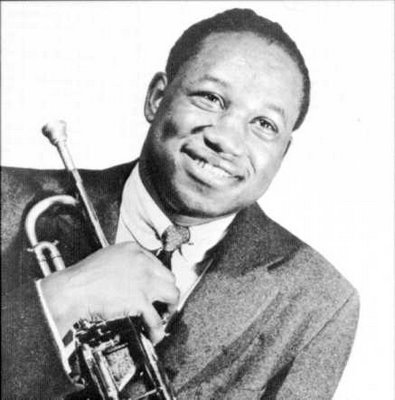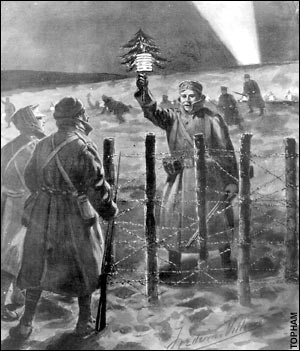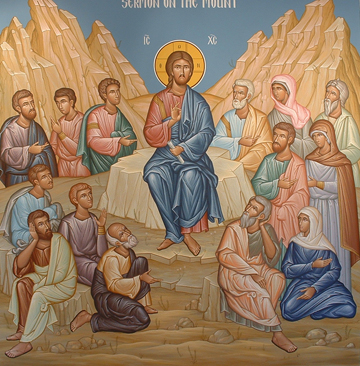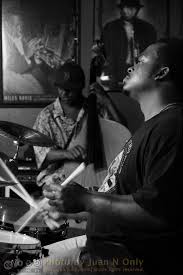Have you noticed you don’t play as much as you used to?
I mean in your adult life, of course, not compared to when you were a kid. But childhood is the best place to start a reflection about play, so let’s begin there.

I remember the sharp pang of pleasure in snapping my wrists around to crack a curving wiffle-ball, watching it rise into blinding summer sun, having to close my eyes to imagine the rest of its flight, wondering whether the last man back was underneath to make the catch.

Image at thekickboxingwriter.blogspot.com
And hundreds of games of tag, plotting improbable, but just barely possible vectors of speed and terrain, narrow windows of escape from whomever was “it” presenting themselves, then the burst of acceleration while twisting a hair’s breath away from straining fingertips.
I remember just sitting in forest forts and tree houses. Breezes on bare skin. Being dirty, bored but unknowingly happy with bosom buddies just as bored and dirty.

I remember flying a couple of kites every year in February and March and launching squadrons of balsa wood gliders in the course of a summer.

Perhaps most of all, I remember endlessly dribbling and shooting a basketball, mostly on a back yard dirt court pounded hard as pavement, the sensual backspin of the ball between my palms just before lifting it up past my face and overhead, the springing motion of jump and release happening in a single string of motion and pleasure.
I was a world-class gamer as a kid. Like pearls on a necklace, these and hundreds of other images of play came back vividly when I went back through the drawers where’d I’d stored them in memory. Retrieving them, I have been reminded of a treasure worth even more than remembered pleasure.
I raised three boys and had 15 years or so of special permission to play again in my late 20’s and 30’s. I reveled in the chance to go back to childhood play. Those years are gone a long time now.
So why don’t I just keep playing?
I get out on long runs in my neighborhood on sunny afternoons or weekend mornings, but I rarely hear the sounds of kids playing in yards. No tag, no games of horse, no Indian Ball. And I never see adults engaged in casual play. I’m out there running, but the only moments that come close to play are when I zig zag a little bit up the street, climbing an asphalt hill I pretend is a ski slope.
I can’t remember the last time I shot a basket, threw a frisbee, or balanced my way along a wall for no reason. I’ve never been a card player, but I rarely walk in on games at kitchen tables anymore. Same with board games. My brother keeps inviting me to go out and shoot a bow with him. I still haven’t taken him up on it.
Folk singer Greg Brown puts it up to the fact that we’re all “livin’ it up” too much on the internet. We’re “people fascinated by screens” he sings, with “no idea what’s on the other side.”
Despite all the time I spend thinking about the dangers of technology, he’s probably got my number.
~
If we could do a global scan for the minutes of playtime per person today–pretending, kicking a ball, dealing cards–and cross-reference it with data from 20 years ago, I wonder what we’d discover?

Photo James Burton
I did get in a couple of rounds of hide and seek a few weeks ago. My neighbors have a relentless 6-year old and I couldn’t resist him. As soon as I covered my eyes and started counting, the dormant muscle memory of spontaneous, utterly useless play re-animated my limbs and nervous system and an inexpressible delight flooded back into my mind and heart. That experience was one more confirmation of the spiritual value of true play, a value, it seems to me, that springs precisely from its “uselessness.”
Of course there is an evolutionary “use” for the exercise, social interaction, rule making and improvisational role-playing of our games. We’re building scads of practical skills essential to dealing with life’s challenges when we play.
And play certainly has socio-biological purpose. You don’t need to be Steven J. Gould to see that sports are sublimated tribal warfare. You don’t need to spend much time on the sidelines of youth soccer or baseball to recognize parents competing with one another through their kids.

Image from SLUH Photo Club Archives
We’re biological creatures. From the angle of science, everything about us, from bowling to bowel movements, has come to be through a stupefyingly complex chain of material causality. Even the breath of inner emotion and thought emerges from a matrix of neuron, bone and gristle. There is, from the perspective of science, a material explanation for everything.
But is that the only story we ought to tell?
This is another version of the question of “science vs faith” I keep coming back to in these posts. Does the fact that we can explain the practical origin and function of something which we at the same time experience as deeply satisfying, meaningful and restorative mean that we’re being false if we seek to protect it–perhaps a better word might be “enshrine” it –in spiritual language?
It seems to me that play time is in need of sanctuary today.

Richard Louv, author of Last Child in the Woods, has documented the dramatic loss of unstructured play in the lives of children today, especially the kind that used to happen in trees and creeks. He claims many of our kids have “nature deficit disorder.”
What vital, human truths will be inaccessible to adults who didn’t soak up big doses of forests and fields as children, along with months of unmediated exposure to the elements and seasons in silent, unknowing contemplation ? I can’t imagine who I’d be without the thousands of hours I spent that way. Much of what I have left of play in my life–hiking, canoeing, occasional camping–I owe to the influence of those years.
I was aware of how vital playing in the woods was for kids by the time I became a father, so I got my boys out hiking, camping and playing in creeks a fair bit when they were small. Looking back, I wish we’d done a lot more of it.
Our family creek-walking time was knocked way down when soccer, basketball, baseball, and track came along. There may be fewer kids in the woods these days, but organized sports of every stripe are booming. You’d like to think that all these “games” would be good news for the human race in terms of reaping the graces of play. Fairer to say they are at least a mixed blessing.

Image at stpsports.com
I’ve spent nearly thirty years as a high school and grade school coach, so I’m not some pointy-headed academic who comes to this subject without a sense of what life is like for ordinary folks. Youth sports can be plenty of fun for kids and parents. And as I’ve mentioned in several posts, they can be great for character formation, beginning with the lesson that the team is more important than the individual.
If I could go back to being a young father again, I’d probably still sign my boys up for sports, but I’d veto the double-sport seasons. I’d stop up my ears against the siren call of “select leagues.” And I’d definitely skip the indoor soccer scene.
There’s a dirty little secret about team sports that parents and coaches ought to be willing to expose to the light of reflection: very often, we’re using our kids. Especially the talented ones. If a kid has notable talent, he or she is likely to be blatantly pressured by adults to specialize in one sport–even one position–and commit to practicing year ’round. The St. Louis Post Dispatch documents one of the consequences: 3.5 million kids each year under 14 are treated for sports injuries from all those too-specific reps. The story cites none other than Tommy John who calls the trend a “racket” preying on parental vulnerability to the mythological rewards of turning your child an elite athlete. Of course if your kids don’t have much talent, especially once they get beyond 8 or 9, they’re likely to hear the subtle message that they are wasting their time. Paradoxically, that may end up being the healthier message in the long run.

Image at thewombatreturns.com
Most of this isn’t our fault. We’re not using kids on purpose. But make no mistake: biologically speaking, winning is deeply satisfying for our species. Scientists have found that testosterone levels actually rise significantly in men when their team wins, whether they are on the field or not. We ought to at least be aware that when our kids win, we win.
Even after years of teaching ‘the dignity and value of the human person’ in my theology classes and putting all of the right language into team handouts and speeches about how every person’s contribution to the team is valuable, how winning isn’t as important as how the game is played, I was caught off guard many times as a coach by how much I wanted to win. I wanted my boys to beat their boys. The desire to best rival coaches was especially strong. In my earliest years, there were times I might as well have dismissed my athletes and called the other coach out into an open meadow to lock antlers.

Image from SLUH XC Archives
When my “ace” was hurt or looked doubtful for the next contest, I was a wreck. Why? Was it really worry for him as a person unto himself? Or was it more about me? When a bench rider got hurt I certainly cared, even felt keen disappointment for him. But I wasn’t a wreck.
I’m convinced the stars of the team know this at some level. They feel it even if they can’t put it into words. They sense the coach cares about them, at least in part, because they deliver the “W’s.” Talent is an anxious burden for many, if not most, of our star athletes. On the one hand their gifts lift them above the crowd. On the other, they know they’re not actually being lifted up for who they are, but for what they can do. It’s hard, unjust really, for them to have to carry the weight of the biological drives of the adult community on the sidelines, but so it goes for us embodied, tribal creatures.
Later in my coaching career I tried to make a habit of taking my super stars off to the side at some key point in the season. I wanted to make sure they heard me say they were free to walk away. That my support for them ran deeper than their value to the team, deeper than my respect for their talent and achievements. I tried to back up those words by making an effort to tend to every kid on the team, particularly the lowest in the pecking order, the same way I would care for the champion. I never totally succeeded; I was still a critter who wanted to win for all the ancient reasons.
But I think the conscious effort and practice eventually did me and my teams a fair bit of good. By the time I retired from coaching we had a team ethos marked more by joy than worry. There was a spirit of play, even on the days of Championship competition. It’s one of my accomplishments as a coach of which I am most proud.
High school sports, existing as they do in the world between childhood and adulthood, will probably always be at least a balance of business as pleasure. But at lower levels organized sports should be much more playful than they are. The “stakes” of games should be lowered for kids and parents in grade school, while “loving the process,” learning life lessons and just plain having fun should be raised to a much higher profile. If you get the mix right you can have fun and engage in healthy competition. But practically speaking, coaches and parents need guidance and encouragement to pull off this balance.

It is good to know that there are organizations like Bill Bommarito’s Coaching Coaches stepping up to do this important work.
Of course the bite organized sports have taken out of unstructured play time is dwarfed by the real bully on the block: video gaming.
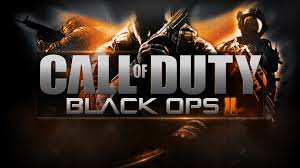
Video games are such a dominant part of our cultural landscape that they’ve nearly enveloped the word “game” itself. We all know what it means to call a kid a “gamer” today.

70% of American households report video game play. First person shooter games like “Call of Duty” and “Modern Warfare” account for 40% of video game play. Studies show that the average American 8th grader spends 23 hours a week playing video games as opposed to 12 hours invested in such games by average 8th grader in 2001. See an article for some of this research here.
We’ve got an older model Wii console at home and I’ll admit there is some genuine, time-wasting fun to be had on the archery range of Wii Resort.
 Of course, as I said at the start, I rarely play games anymore, virtual or otherwise. And I’d feel a bit sheepish shooting virtual arrows when my brother is still waiting for me to join him for the real thing.
Of course, as I said at the start, I rarely play games anymore, virtual or otherwise. And I’d feel a bit sheepish shooting virtual arrows when my brother is still waiting for me to join him for the real thing.
While traditional games have always been supported by a wide variety of commercial tackle and trim, video gaming has taken this product-driven dimension of play to unimaginable heights: a reasonable estimate for its footprint in this year’s economy is over 25 billion dollars.
The most popular video game series in history is Grand Theft Auto.

The 2013 edition has just come out. My 27-year old son recently had a few minutes to play the game. He said it was the most fully realized virtual world he’d ever experienced.
Imagine–or sample for yourself, I suppose–a video game in which you can simply sit in your room and watch TV! I mean actual, current television programming inside the game environment. I wonder if you can look into opposing TV screens–shot by opposing virtual video cameras–like we did with opposing mirrors when were kids? That was creepy enough, but infinitely receding virtual reality within an already virtual world makes my flesh crawl. You can also practice yoga. I assume you can throw virtual rocks into virtual rivers all day long, too, if you want to.
But other activities are much more popular than throwing rocks or watching TV in the world of Grand Theft Auto. And they’re built in with astonishing detail.

The text in this image instructs players to rotate the pliers to pull out the victim’s eyes.
As you drive around planning your next crime, you can take congratulatory “selfies”–cell phone pictures of yourself. But be warned! You’ll encounter other avatars via the internet with lives and criminal plans of their own, including sadistic scenarios of rape and torture. This is a world where you can play through a series of murders designed mostly for laughs. Or visit a strip club where women’s nipples are more fully graphically realized than their eyes.

The text here includes instructions to “hold down A to touch.”
Jospeph Berstein of Buzzfeed reports that “Trevor,” GTA’s most “sentimental psychopath”, is the character we’re supposed to have the most fun with.

Trevor Philips Character in GTA
Andy Corrigan, writing on a website called Gift Ideas for Horror Fans captures the essence of the man in this particularly chilling passage:
“There are two very distinct sides to Trevor Philips… On one hand, he’s an unhinged, spiteful bastard. The first time you meet him in-game, he does something so sickening that you just know you’re going to spend a lot of time feeling uncomfortable when playing as him. He doesn’t disappoint either; his obvious taste for the distasteful only snowballs the further you get. On the other, he’s a man with strange sense of morality, a man with a layer of depth not obviously apparent at first. Unlike anyone else in the game, Trevor is the one character that’s somewhat respectful towards women, berating his subordinate, Wade, early on for “disrespecting women” after he calls a woman he was just fornicating with a “bitch”. He’s also the only one of the playable trio to harbour any real feelings of love towards someone else in the game; a result of an unexpected infatuation later on. In opening up, Trevor shows real vulnerability, even if it’s played out for laughs at his expense.”
I watched some long segments of this game on Youtube, and, as you might imagine, the research was tough on me. I’ve worked with teenagers all my adult life so the thought of 14-year olds all over the country spending uncountable hours in a world like this was hard on the soul.
I try to take comfort from the fact that my emotions were wired in another era. Maybe this kind of content mostly bounces off the psyches of young people today. That’s certainly what they tell you when you ask them. But I just can’t convince myself that this isn’t unavoidably corrosive stuff.

Greg Tito of The Escapist, an expert on gaming who writes for one of the hobby’s most popular magazine–someone whom I presume feels free to tell the truth–confirms my intuitive diagnosis. “The defining emotion of GTA V,” he says, “isn’t excitement or elation, but sadness.” Should I take a crazy kind of comfort in the fact that such a horrible game is at least metaphysically honest?
Nope. As it turns out there is a sophisticated level of dishonesty and manipulation built right in to many of today’s most popular video games.
Though our physical and psychological desires and cravings are “original”, that is built in by evolution, our arrival as human beings with freedom and a conscience requires us to distinguish ourselves from the mostly reflexive life of animals. Who knows what the dolphins are thinking, so let’s respect them for the subtle beings they are. But as for the way we think of ourselves let’s be clear: limited though our freedom may be, accountability for what we choose–both individually and societally– is an essential part of what it means to be human. It is inexcusable that for centuries we’ve come up with ways to inflame and satisfy our baser appetites for a price.

Image at goodship-a-k.livejournal.com
A recent story on NPR’s All Tech Considered paints the disturbing picture that video games are taking that history to the next level. Read the piece here:
How Video Games Are Getting Inside Your Head — And Wallet
It turns out that gaming companies–and let’s remember: practically speaking these are the adults in charge of a lot of our kids today– analyze every choice their “customers” make while “in game.” And they use what they learn to influence the behavior of gamers. NPR reports that they’ve figured out game features that make players want to stay on longer. They also sell virtual goods–for real money–inside the games. They set up uncomfortable and frustrating scenarios like crushing kid’s forts and then, just in the nick of time, offer them a way to save the day, for a price.

Image at mammothkids.com
The All Tech reporter goes on to note that many of the people spending the cash in these games are kids, including his own children. Game console manufacturers, he adds, sell gift cards at convenience stores allowing kids to make purchases on video games, even if they don’t have a parent credit card.
When I read this piece, I was immediately reminded of the story of Jeffry Wigand’s confrontation with Cigarette manufacturers so brilliantly captured in the film “The Insider.”
The moment of truth for Wigand was when he realized that a smoker’s addiction wasn’t an accidental result of consuming a “natural” product. Instead, the indisputably lethal addiction was intentionally designed in to cigarettes. In fact, the addictive properties were intentionally amplified to increase sales. This is a fact I still don’t believe has really penetrated the popular imagination.
There is no polite way to put this: for cigarette manufactures, human beings are regarded as consumer objects to be used for economic benefit, not as human beings with inestimable value and inviolable dignity.
Video games like Grand Theft Auto V may not kill you, but spend some time driving around and getting into trouble in that world and you won’t be arguing with the point that it injects the soul with a destructive drug. A drug its manufactures know is addictive and are constantly working to make even more so. Our kids are profit margins, not people, for them. Puts a very dark spin on the popular phrase “our children are our future” doesn’t it? Even at their worst, at least team sports aren’t intentionally addicting kids to practicing pitching and corner kicks.

Photo James Burton
Every year I get to be both Field Biologist and Middle School teacher in a summer program called Walkabout. It brings together a diverse group of 20 or so rising 6th graders from urban schools for three weeks of interdisciplinary study and activities in Reading, Writing, Field Biology and Art. Every other day we climb into vans and head out to discover the critters and creeks of Missouri first hand. I’m happy to report that even though many of the boys have spent very little time in nature, it still works its magic on them.

Photo James Burton
Video games, electronics and cell phones are strictly prohibited on our trips. So while we’re riding in the vans they can’t play the hand-held games that are such a dominant feature of their lives. We have them listening to American Folk, Blues and Jazz music instead. We do let them talk, though, and for about a week and half they’re in withdrawal. Almost all they talk about are video games, recounting their exploits in virtual worlds and sharing secrets level by level. The fact that their conversations eventually turn to stories of our adventures together is another one of those things I take great pride in as an educator.
~
I’ve been trying to make the point that play is deeply spiritual–and that is under attack. Let me get back to counting some of the delights of that game of Hide and Seek I spoke of early in this post and use those reflections as a way to name some of the graces of play.
First, there was the simple, physical pleasure of whimsically scurrying about in a mock search. You get to certain age and you don’t do so much whimsical scurrying about, know what I mean? It was fun just moving that way. The pleasure of our bodies in ritual motion is a wonderful grace to be savored.

Photo from Family Archives
I remember basking in the pleasure of a warm autumn day while my little neighbor and I traded roles as hider and seeker. “Gold” captures how I felt inside just as much it as describes the sunlight filtering through Tulip Poplar leaves. Play invites this kind of unguarded openness to the world around us.

Photo James Burton
Most of all, there was joy–astonishment really–at such a vivid encounter with the inner life of another human being. To play Hide and Seek was to behold a particular child’s mind, in myself as well as in my little partner. Isn’t this what we are trying to express when we say we believe in Christ, in a God revealed in the flesh and blood life of another?
Don’t delights like these call us to be open to fundamental truths that lie at the heart of the world’s great religions?
“Being” is it’s own value, these traditions tell us. It transcends our judgment and our freedom. There is no reason why. No way to name and own it. God simply says “I am” and declares that each of us are reflections of this same, irreducible truth. Human beings are not “for” anything in an ultimate sense, unless it be “for ourselves,” “for one another” or “for being.”

Image from SLUH Photo Club Archives
Any story about our “purpose” that seeks to tell the whole truth must include the mystery of being itself. In this mode of awareness we can retrieve the significance of a rather standard theological truth: Even the orthodox terms “God” and “Love” are inadequate ways to name that which cannot be named. They are just the best we have.
If you want to cut to the more practical realm of ethics and morality, the same truth can be expressed this way:
“We must never make another person an object to be used, nor must we ever regard ourselves in this way. To do so is a violation of a truth that transcends us.”
This is the Law and the Prophets isn’t it?
If true play is disappearing, there are dangerous spiritual implications–which is to say dangerous real world consequences–for how human beings are coming to think of themselves and relate to one another.
In 1978 on the occasion of the World Cup in Argentina, Pope Benedict XVI, then Cardinal Joseph Ratzinger, called our desire for true play “a longing for the paradisal life – an escape from the wearisome enslavement of daily life.”

Commentator Josef Clemon’s take on Benedict’s insight about play is that it ought to be “totally free, without limits or constrictions.. Something that ‘should not be so’ in the mechanical order of creation , the ongoing weary way of things. It is, therefore, all the more beautiful for its ‘uselessness'”.
What will it take to provide a true sanctuary for play–for human beings themselves for that matter–in the 21st century? In an an increasingly technological and data driven era, how will we keep from treating one another as objects to manipulate and consume, even in the pursuit of something as pure as our recreational activities?
Pope Francis, in the kind of powerful, direct, prosaic speech for which he is already so well-known, put it this way over 10 years ago:
“When images and information have as their sole objective the intent of provoking consumption or manipulating people…we find ourselves in front of an assault, an act of violence, a kidnapping.”
-Homily October 10, 2001
So, will we allow the innocent, useless, child-like and transcendent approach to living life, so wonderfully expressed in our moments of “true play,” to be kidnapped by society’s super-scaled market and mechanical forces?
Resisting such a future will require a dauntingly high level of cultural awareness and a very skilled, disciplined approach to the way we govern ourselves and conduct our business. Each of us has to commit to playing our part in that massive undertaking as our competencies and consciences recommend.
But what we all can do–beginning today– is to create a sanctuary for true play in our lives, in our own hearts. And we can try to open this sanctuary for as many others as we can invite to the next game of cards, the next gig, the next moment of wonderfully useless, restorative, fun.

- I




